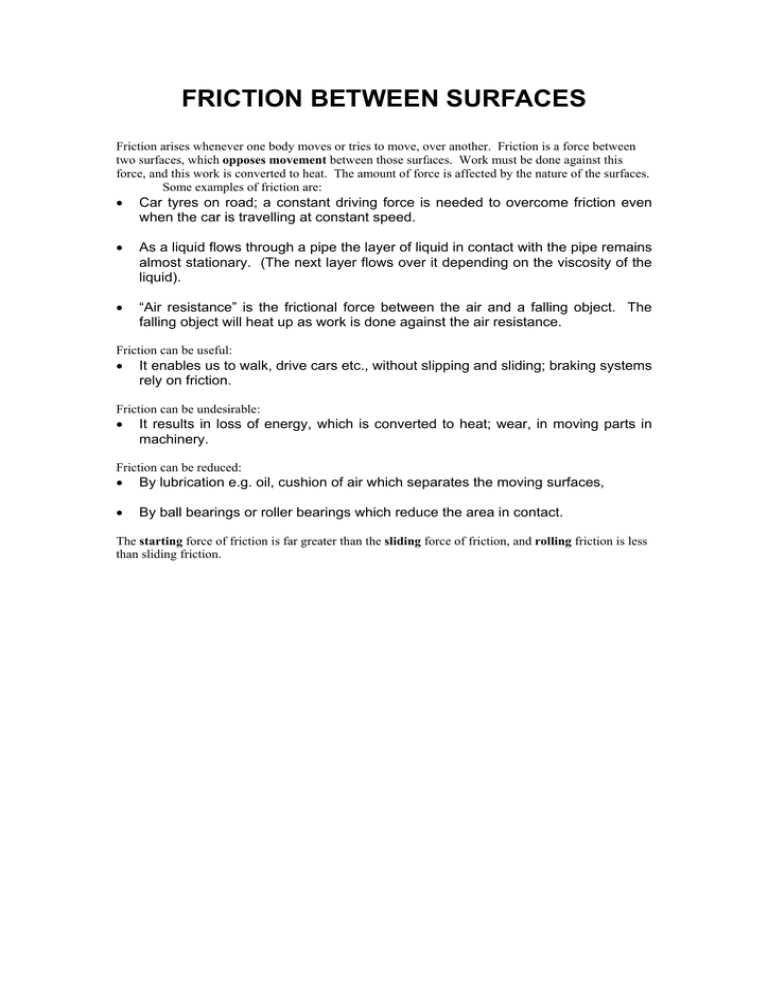FRICTION BETWEEN SURFACES
advertisement

FRICTION BETWEEN SURFACES Friction arises whenever one body moves or tries to move, over another. Friction is a force between two surfaces, which opposes movement between those surfaces. Work must be done against this force, and this work is converted to heat. The amount of force is affected by the nature of the surfaces. Some examples of friction are: • Car tyres on road; a constant driving force is needed to overcome friction even when the car is travelling at constant speed. • As a liquid flows through a pipe the layer of liquid in contact with the pipe remains almost stationary. (The next layer flows over it depending on the viscosity of the liquid). • “Air resistance” is the frictional force between the air and a falling object. The falling object will heat up as work is done against the air resistance. Friction can be useful: • It enables us to walk, drive cars etc., without slipping and sliding; braking systems rely on friction. Friction can be undesirable: • It results in loss of energy, which is converted to heat; wear, in moving parts in machinery. Friction can be reduced: • By lubrication e.g. oil, cushion of air which separates the moving surfaces, • By ball bearings or roller bearings which reduce the area in contact. The starting force of friction is far greater than the sliding force of friction, and rolling friction is less than sliding friction.



